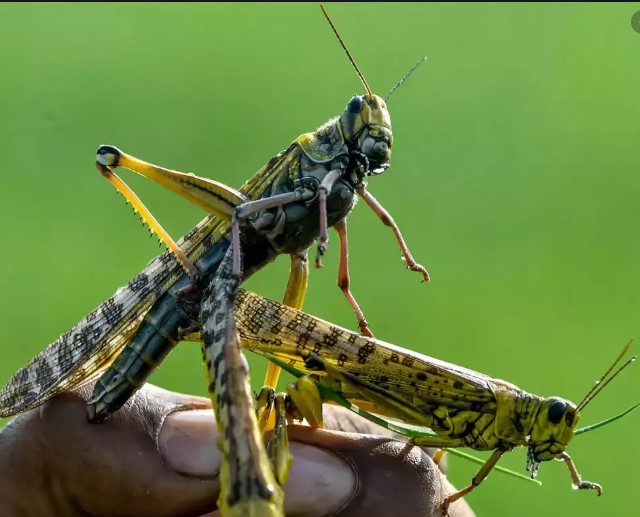Why in news?
- On April 11-12, scientists at the Locust Warning Organisation (LWO) observed groups of desert locusts — the same destructive migratory pests currently devouring acres of maize, sorghum and wheat crops in East Africa.
- While locusts are seen in India as well, that is normally only during July-October and mostly as solitary insects or in small isolated groups.
- Their being spotted along the India-Pakistan border before mid-April this time has raised the alarm bells, and comes at a time when the country is battling the more high-profile novel coronavirus pandemic.
What exactly are locusts?

- The desert locust (Schistocerca gregaria) is a short-horned grasshopper that is innocuous while it is in a “solitary phase” and moving about independently.
- These winged insects differ from normal hoppers, and become dangerous only when their populations build up rapidly and the close physical contact in crowded conditions triggers behavioural changes.
- They, then, enter the “gregarious phase”, by grouping into bands and forming swarms that can travel great distances (up to 150 km daily), while eating up every bit of vegetation on the way.
- If not controlled at the right time, these insect swarms can threaten the food security of countries.
- Kenya is already reporting its worst locust outbreak in 70 years, while Ethiopia and Somalia haven’t seen one this bad in quarter of a century.
How serious is this sighting of the locusts by the LWO?

- The rabi crop has already been harvested and farmers are yet to commence plantings for the new kharif season. Therefore, it is not very serious.
- The timing, though, is cause for concern. The normal breeding season for locusts in India is July-October. But this time, they have been sighted by mid-April.
- The longer time to breed is more conducive for build-up of gregarious insect swarms, as opposed to solitary, innocuous hoppers.
What kind of damage can they cause?
- Locusts are polyphagous, i.e. they can feed on a wide variety of crops.
- Secondly, they have an ability to multiply rapidly. A single female desert locust lays 60-80 eggs thrice during its roughly 90-day life cycle.
- The damage potential of locusts has been limited in India only because of the country hosting a single breeding season — unlike Pakistan, Iran and East Africa, where they also multiply during January-June.
Way forward:
Along with spraying organophosphate insecticides which are effective against Locusts – Control operations also require procurement of equipment, training of field teams, prepositioning of supplies in key breeding areas and updating contingency plans.
-Source: Indian Express



